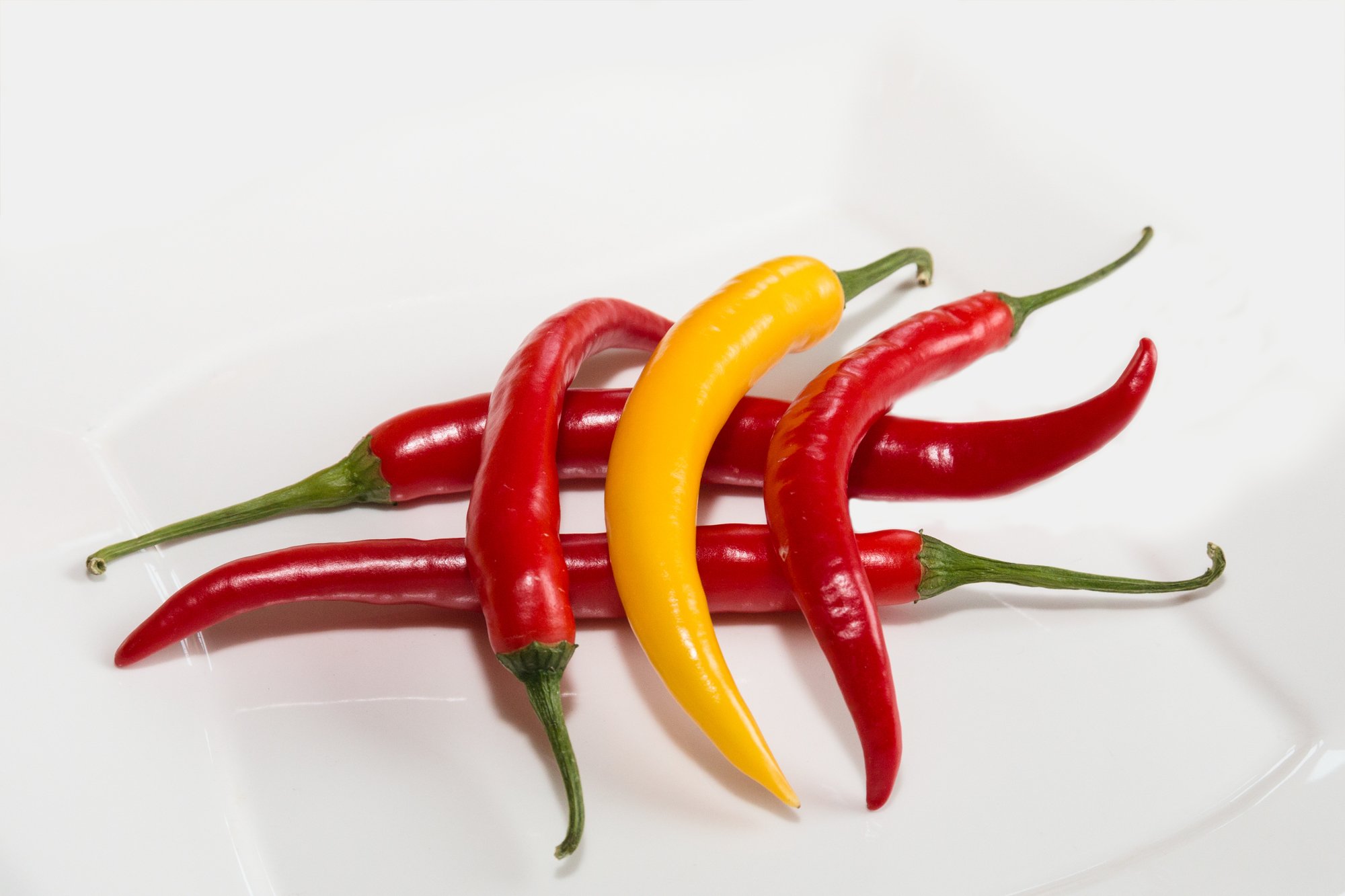There’s hot science behind spicy food.
Are you a heat fanatic or a mild meal fan? It’s time to up your knowledge on spicy food!
1. Spicy isn’t a taste
What do salty, bitter, sour and sweet all have in common? They’re all tastes.
Spicy is not a taste. Certain compounds in spicy food activate sensory neurons called polymodal nociceptors. These receptors are activated by extreme heat. Your mouth feels a burning sensation because you brain believes it is in contact with a dangerous heat source, and he central nervous system reacts to whatever the sensory system tells it is going on.
2. These compounds are called Capsaicinoids
Capsaicinoids are the compound that give spicy food its fiery heat. They produce a burning sensation in the tissue of any mammal they come in contact with.
3. Capsaicinoids bring the pain
Capsiacoids target the thousands of pain receptors your tongue contains, called vanilloid or TRPV1 receptors. When the capsaicin molecules come in contact with the receptors, it binds to them, producing sensations similar to abrasive damage.
The type of molecules the spicy food has affects exactly how you feel the spiciness. The capsaicin and piperine in chili peppers have heavier, larger molecules called alkylamides that stay in your mouth. Whereas wasabi is made of smaller molecules called isothiocyanates that float up to your senses.
4. There’s a spicy food heat scale
The Scoville scale, named for American Pharmacist Wilbur Scoville, is the standard measurement of heat for spicy food. The Scoville scale measures how much its capsaicin content can be diluted before the heat is no longer detectable to us.
For example, sweet bell peppers scores a 0 on the Scoville scale while the Carolina Reaper measures between 1.5-2 million Scoville heat units. That’s half of what’s found in pepper spray!
5. You can adapt to the heat
After you have eaten plenty of spicy food, you may notice that the “burn” sensations won’t bother you as much. This is because the receptors eventually stop responding so strongly to the compound.
Why do we love the pain of spicy food? The difference between getting too close to a fire and eating jalapeno peppers is one can actually cause physical damage. Eating hot foods like those jalapeno peppers allows us to court danger without risk, activating areas of the brain related to both pain and pleasure, according to The Wall Street Journal. Our love of spicy food is the result of conditioning. We have evolved to love that fiery pain.
Does the science of spicy food excite you? Are you looking to find a career in food science that fits your skills? Take our STEM Type quiz and find out what careers would bring the heat!








Leave A Comment
You must be logged in to post a comment.